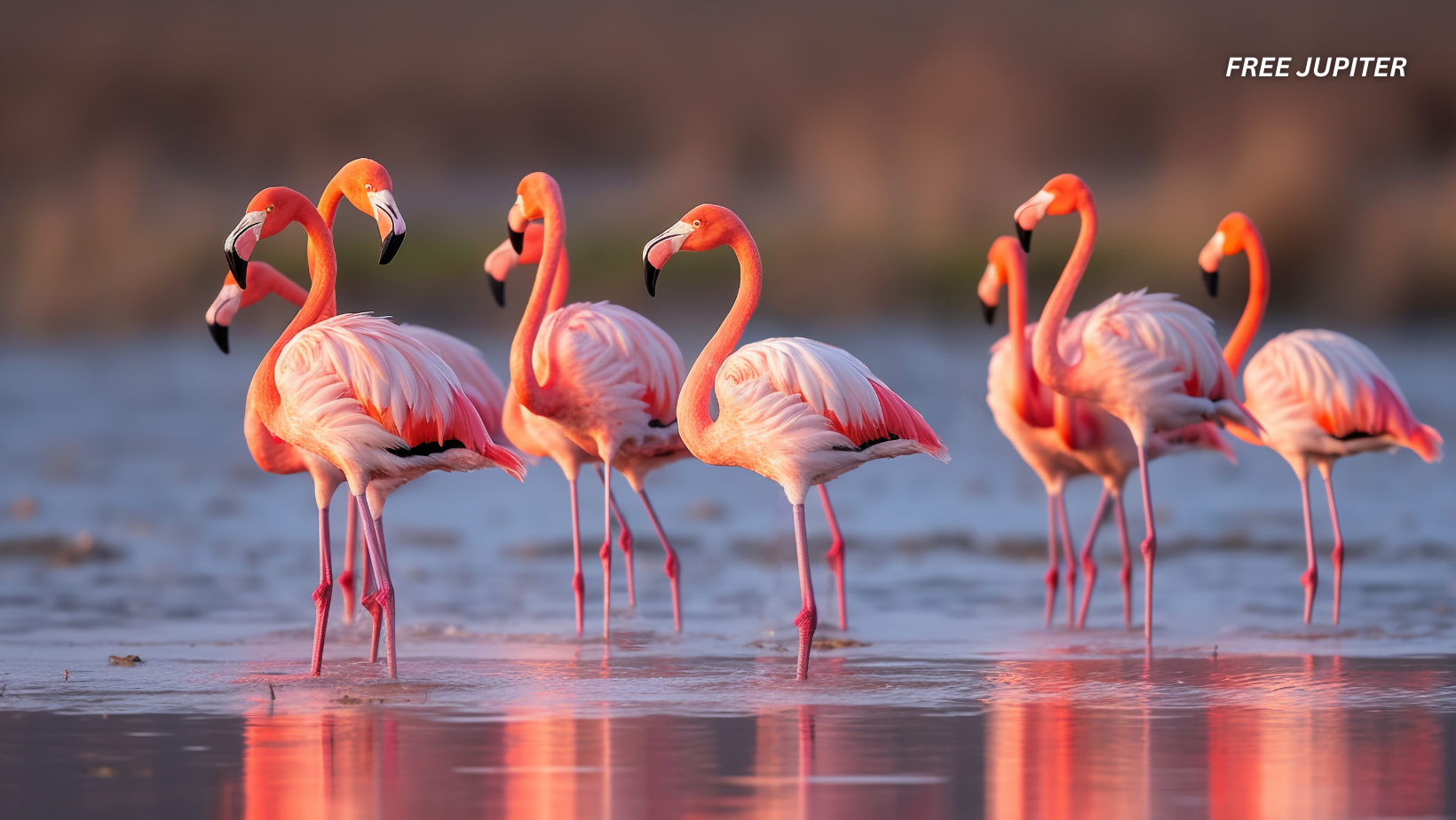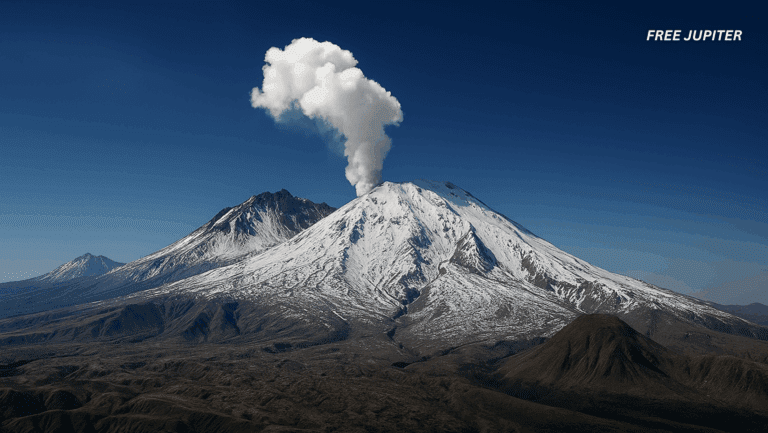Friendly Note: FreeJupiter.com shares general info for curious minds 🌟 Please fact-check all claims—and always check health matters with a professional 💙
The Florida Everglades has always been a place of mystery—an endless stretch of sawgrass marshes, winding mangrove forests, and winding waterways that seem to hum with life. But recently, the wetlands were lit up with something unexpected: a massive splash of pink. More than a hundred flamingos were spotted in one breathtaking flock, the largest gathering of these elegant birds recorded in Florida in over ten years.
For bird enthusiasts, this sighting is more than just beautiful—it may also hint at the return of a species once nearly wiped from Florida’s skies.
The Discovery: Pink Clouds Over the Everglades
The flamingo spectacle unfolded when wildlife photographer and scientist Mark Ian Cook joined an aerial bird survey over Florida Bay, a vast expanse of shallow water at the southern tip of the state. From a helicopter, he and pilot James Davies scanned the water’s edge, keeping an eye out for common birdlife.
At first, Davies pointed to a group of roseate spoonbills, another pink-plumed bird that often frequents the area. But as the chopper approached, it became clear these weren’t spoonbills at all. They were flamingos—exactly 115 of them, huddled together in a shimmering pink cluster.
Cook later explained that this was the largest flamingo gathering recorded in Florida since 2014, when 147 of the birds were spotted in a conservation area nearby.
Of course, helicopters aren’t exactly subtle. As the aircraft hovered, the flamingos suddenly took flight, their long necks and legs stretching as their coral-colored wings beat furiously against the sky. To Cook, the moment was equal parts thrilling and fleeting. But to a group of fishermen below, it must have felt like a dream. As the flamingos circled around their boat in sweeping arcs, the fishermen were treated to a rare show usually reserved for the tropics.
Cook managed to capture a few photographs before allowing the birds to settle again, leaving them in peace.
Read more: Humpback Whales Keep Saving Animals From Orcas—And No One Knows Why
Florida’s Forgotten Flamingos
Once upon a time, Florida was no stranger to flamingos. In the 1800s, the birds were a common sight across the southern part of the state, their presence woven into the region’s natural history. But that began to change as humans began to see the birds as more commodity than creature.
Flamingos were hunted heavily for their feathers, which were used to decorate women’s hats and fashion accessories during the Victorian era. Their meat was also sought after, and by the early 20th century, Florida’s native flamingo population had been nearly wiped out.
For decades, any flamingo sightings in Florida were considered flukes—either escapees from captivity or wandering visitors from the Caribbean and Mexico. By the mid-1900s, many assumed flamingos had disappeared from Florida for good.
A Hurricane Brings Them Back
But nature has a way of surprising us. In 2023, Hurricane Idalia, a powerful storm that tore through the Gulf of Mexico, unintentionally became a flamingo chauffeur. As the storm disrupted the birds’ nesting grounds in Mexico’s Yucatán Peninsula, it scattered flocks across the southeastern United States. Suddenly, flamingos began showing up in unexpected places—Texas, Alabama, even as far north as Ohio.
Florida, however, saw the biggest influx. While many of the displaced birds eventually made their way home, some stayed. One flock at Merritt Island National Wildlife Refuge has been living there for over a year and a half, suggesting that Florida may once again be seen as a suitable home for flamingos.
Why the Everglades Are Perfect for Flamingos
The Everglades, with its shallow waters and abundance of aquatic life, offers the perfect buffet for a flamingo. These birds are filter feeders, using their odd-shaped bills to sift through water and mud for algae, tiny crustaceans, and small invertebrates. It’s these crustaceans, rich in carotenoid pigments, that give flamingos their famous pink coloration.
In places like Florida Bay, where salty wetlands blend with mangrove islands, flamingos can find the conditions they need to thrive—warm water, safe roosting areas, and a reliable food supply.
Scientists also note that Florida sits between the flamingos’ known breeding areas in Cuba and the Yucatán Peninsula, making it a logical stopover point. It may be that Florida was always part of the flamingos’ range, but the population collapse a century ago erased them from the map.
What Makes Flamingos So Unique?
Flamingos are not just striking to look at—they’re also deeply unusual in the bird world. Here are a few quirky facts that highlight their charm:
- Color diet: A flamingo’s pink hue isn’t natural. Chicks are born with gray feathers and only turn pink after consuming a diet rich in carotenoids. Without the right food, they’d remain pale.
- Odd eating style: Their bills are specially adapted to filter food while upside down in the water. It’s one of the few times in nature where eating literally happens head-down.
- Synchrony in motion: Flocks often move together as though choreographed. When startled, hundreds of birds may take flight in unison, creating what looks like a pink wave rolling across the sky.
- Monogamous bonds: Flamingos are loyal partners. Once paired, they often stay together season after season.
- Ancient lineage: Fossil records suggest flamingos have been around for over 30 million years, outlasting countless other species.
Read more: Marine Animal Shows Are Officially Banned in Mexico After Historic Legislative Vote
Are They Really Returning for Good?
Julie Wraithmell, executive director of Audubon Florida, believes the recent sightings aren’t just accidents. She explained that flamingos were being seen with increasing frequency even before Hurricane Idalia, particularly in Florida Bay and the Everglades’ water conservation zones.
“We already know there’s movement between the Yucatán, Cuba, and South Florida,” she said. “The question is whether these birds will stay long enough to reestablish a permanent population.”
One big missing piece? Nesting. While flamingos are sticking around, no successful nesting has been recorded in Florida since the late 1800s or early 1900s. For conservationists, the return of flamingo nests would be the true sign that Florida’s population has recovered.
Still, the fact that flocks as large as 115 birds are being seen again is cause for cautious optimism.
Why Flamingos Matter
It might be easy to think of flamingos as simply decorative wildlife, but they serve important ecological roles. As filter feeders, they help regulate the populations of algae and small organisms in wetlands, contributing to the balance of aquatic ecosystems. Their presence can also signal healthy wetland conditions, since flamingos depend on a stable food supply and clean water.
Beyond ecology, flamingos carry symbolic weight. They’ve become cultural icons, from roadside lawn ornaments to tropical décor. But seeing them in the wild, where they belong, is far more meaningful than spotting them on a plastic lawn display.
Read more: Scientists Discover Animals Have a Mysterious ‘Sixth Sense’, Changing Evolutionary Theories
The Road Ahead
For now, the future of Florida’s flamingos remains uncertain. Will the Everglades once again be home to nesting colonies? Or will these sightings remain scattered surprises, dependent on storms and wandering birds?
What is clear is that conditions are improving. With better conservation practices, restored wetlands, and fewer threats from hunters, Florida offers a far more welcoming environment than it did a century ago. And as long as flamingos keep arriving, even in small numbers, there’s hope that one day their return won’t be newsworthy—it will simply be part of Florida’s natural rhythm again.
Until then, every sighting of a swirling pink flock over the Everglades is both a rare gift and a reminder of how nature, given the chance, can reclaim what was once lost.










